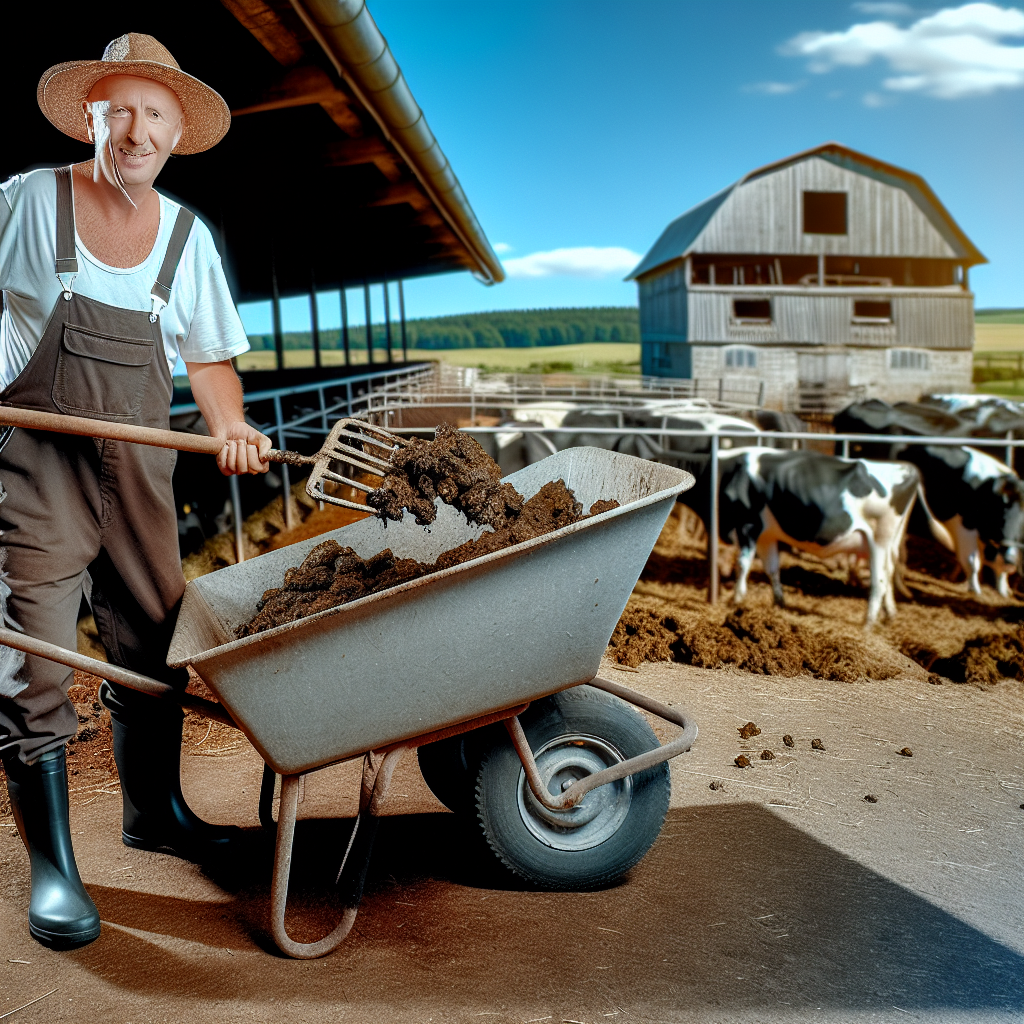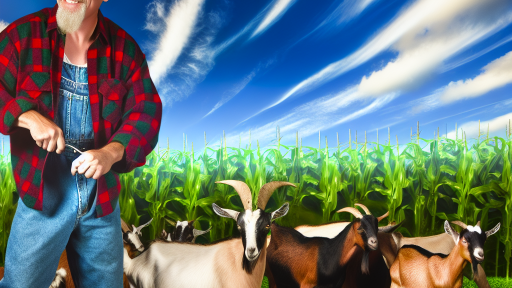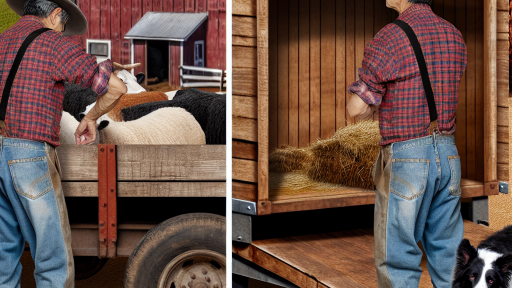Understanding the Types of Livestock Waste and Their Composition
Types of Livestock Waste
Livestock waste primarily consists of manure, bedding, and wastewater.
Manure results from the digestive process of animals.
Bedding material absorbs moisture and provides comfort to livestock.
Wastewater comes from cleaning operations and animal upkeep.
Manure Composition
Manure has a complex composition that varies by animal type.
Generally, it contains nitrogen, phosphorus, and potassium.
These nutrients are beneficial for plant growth, but in excess, they become detrimental.
The moisture content in manure also varies significantly.
Bedding Material
Bedding materials include straw, wood chips, and sawdust.
These materials help control odors and absorb moisture.
Some bedding options also contribute organic matter to the soil.
Sustainability of the bedding is an important factor to consider.
Wastewater Characteristics
Wastewater poses unique management challenges due to its chemical content.
It often contains pathogens, nutrients, and organic matter.
Proper treatment is essential to reduce environmental risks.
Transform Your Agribusiness
Unlock your farm's potential with expert advice tailored to your needs. Get actionable steps that drive real results.
Get StartedAdditionally, wastewater can potentially be reused in agricultural settings.
Importance of Understanding Composition
Recognizing the composition of livestock waste is critical for effective management.
This knowledge allows for better nutrient management and reduces pollution.
Furthermore, it enhances the overall sustainability of livestock operations.
Consequently, farmers can achieve greater efficiency and compliance with regulations.
Environmental Impacts of Improper Livestock Waste Management
Contamination of Water Sources
Improper livestock waste management often leads to water contamination.
Nutrients and pathogens from waste can enter nearby water bodies.
This process severely impacts aquatic ecosystems.
Moreover, contaminated water poses health risks to humans and animals.
Immediate measures are necessary to mitigate these harmful effects.
Soil Degradation
Excessive livestock waste can degrade soil quality significantly.
High nutrient levels can lead to soil imbalances.
Consequently, this affects plant health and crop yields.
Additionally, poor soil quality increases erosion rates.
Soil degradation jeopardizes future agricultural productivity.
Greenhouse Gas Emissions
Improper management of livestock waste contributes to greenhouse gas emissions.
Microbial decomposition of waste produces methane and nitrous oxide.
These gases have potent effects on climate change.
Farmers must adopt better waste management practices to minimize these emissions.
Impact on Animal Health
Improper waste disposal can lead to the spread of diseases among livestock.
Pathogens thrive in accumulated waste and can infect herds.
This situation increases veterinary costs and reduces animal productivity.
Preventive measures are vital to protect animal health and farm profitability.
Community Health Risks
Livestock waste can harm community health through airborne pathogens.
Showcase Your Farming Business
Publish your professional farming services profile on our blog for a one-time fee of $200 and reach a dedicated audience of farmers and agribusiness owners.
Publish Your ProfileClose proximity to improperly managed waste creates unpleasant odors.
This can affect the quality of life for nearby residents.
Furthermore, contaminated air may lead to respiratory issues.
Communities deserve to live in a clean and healthy environment.
Regulatory Frameworks and Guidelines for Waste Management
Understanding Regulatory Requirements
Regulatory frameworks guide livestock waste management practices.
Governments establish these guidelines to protect public health.
Additionally, they aim to safeguard the environment from pollution.
Key Legislation for Waste Management
Several pieces of legislation govern livestock waste disposal.
The Clean Water Act mandates proper waste management practices.
Similarly, the Resource Conservation and Recovery Act regulates hazardous waste.
These laws ensure compliance with safe disposal methods.
State and Local Regulations
State governments often create more specific regulations.
Local guidelines may also apply based on community needs.
Farmers must familiarize themselves with these local regulations.
Best Management Practices
Implementing best management practices enhances waste management efficiency.
These practices include proper waste storage and treatment methods.
In addition, nutrient management planning is essential.
Regular training ensures that farmers stay updated on practices.
Permitting Requirements
Most livestock operations require permits for waste management.
This process ensures that facilities meet environmental standards.
Moreover, adherence to permit conditions is crucial for compliance.
Monitoring and Reporting
Regular monitoring of waste management practices is necessary.
Farmers must report waste management activities to regulatory bodies.
This transparency helps maintain accountability and compliance.
Benefits of Compliance
Complying with regulations fosters community trust.
It also promotes sustainable farming practices.
Furthermore, compliance helps avoid potential legal issues.
Discover More: Sustainable Fencing Solutions for Sheep
Best Practices for Collection and Storage of Livestock Waste
Understanding Collection Methods
Effective collection of livestock waste is crucial for proper management.
Begin by assessing the type of livestock and their waste output.
Select a collection method that suits your specific operation.
Common methods include manual collection and mechanical systems.
Employing automated systems can enhance efficiency significantly.
Regular monitoring of waste collection is essential for maintaining standards.
Implementing Storage Solutions
Choosing the right storage solution is vital for waste management.
Consider using covered storage facilities to reduce odor and runoff.
Storage tanks can help manage the liquid waste effectively.
Ensure that storage facilities comply with local regulations.
Regular maintenance of storage systems prevents leaks and spills.
Utilizing Proper Techniques
Utilizing proper techniques during collection minimizes environmental impact.
Showcase Your Farming Business
Publish your professional farming services profile on our blog for a one-time fee of $200 and reach a dedicated audience of farmers and agribusiness owners.
Publish Your ProfileAvoid overfilling to prevent spills and contamination of surrounding areas.
Implement planned schedules for waste collection to ensure consistency.
Handling waste carefully reduces the risk of disease transmission.
Monitoring and Record-Keeping
Monitoring waste levels provides valuable data for management practices.
Establish a record-keeping system to track waste generation rates.
Documentation aids in compliance with agricultural regulations.
Regular evaluations help identify areas for improvement in waste management.
Assessing Environmental Impact
Consider the environmental effects of livestock waste management practices.
Conduct regular assessments to identify potential pollution sources.
Incorporate practices that promote sustainability and reduce emissions.
Engaging with environmental experts can enhance your strategies.
Explore Further: Weight Gain Techniques for Beef Cattle
Methods for Composting Livestock Waste
Understanding Composting
Composting is a natural process of recycling organic material.
It transforms livestock waste into valuable fertilizer.
This method improves soil structure and nutrient content.
Benefits of Composting Livestock Waste
Composting livestock waste offers many environmental benefits.
Firstly, it reduces greenhouse gas emissions.
Secondly, it minimizes the potential for water contamination.
Additionally, compost enriches soil, promoting healthy crops.
Composting Techniques
Effective composting requires specific techniques for success.
Start by selecting the right materials.
Use a mix of manure, bedding, and green materials.
Balancing Carbon and Nitrogen
Maintain the optimal carbon to nitrogen ratio.
This ratio typically ranges from 25:1 to 30:1.
Incorporate materials like straw for carbon and manure for nitrogen.
Maintaining Moisture Levels
Moisture is crucial for microbial activity in composting.
Keep the pile damp, but avoid waterlogging.
Regularly turn the compost to enhance aeration.
Monitoring Temperature
Temperature control is essential for effective composting.
Monitor the compost pile to reach temperatures of 130-160°F.
This heat helps to kill pathogens and weed seeds.
Challenges in Composting
Composting livestock waste can present several challenges.
Odor management is a common issue.
Implementing proper aeration techniques can mitigate smells.
Pest Control
Pests can also pose a problem during composting.
Covering the pile and maintaining a balanced diet can deter them.
Ensure that the mixture is not too wet to avoid attracting pests.
Utilizing Finished Compost
Once the compost is ready, it can be utilized effectively.
Spread it in gardens, fields, or landscaping areas.
This application enriches the soil and supports plant growth.
Showcase Your Farming Business
Publish your professional farming services profile on our blog for a one-time fee of $200 and reach a dedicated audience of farmers and agribusiness owners.
Publish Your ProfileFind Out More: Selecting Breeds for Exotic Livestock Success

Utilizing Livestock Waste as Fertilizer
Understanding Nutrient Content
Livestock waste contains essential nutrients for plant growth.
These nutrients include nitrogen, phosphorus, and potassium.
Conduct a nutrient analysis to determine specific content.
This analysis aids in developing an effective fertilization strategy.
Timing the Application
Apply livestock waste during appropriate growing seasons.
This timing maximizes nutrient absorption by crops.
Additionally, consider the weather conditions before application.
Avoid applying waste just before heavy rains to prevent runoff.
Methods of Application
Various methods exist for applying livestock waste effectively.
- Broadcasting is a common method for large areas.
- Injecting waste directly into the soil improves nutrient availability.
- Composting waste can enhance nutrient stability.
Incorporating Best Practices
Follow best practices to promote safe application.
Always wear protective gear during handling and application.
Implementing buffer zones around water sources prevents contamination.
Monitoring the Impact
Regular monitoring ensures the effectiveness of fertilization.
Soil tests should be conducted annually to assess nutrient levels.
Adjust application rates based on soil nutrient status.
Addressing Regulatory Considerations
Familiarize yourself with local regulations regarding livestock waste management.
Compliance with these regulations ensures environmental protection.
Consult with agricultural extension services for guidance.
Uncover the Details: Record Keeping Tips for Sheep Farmers
Innovative Technologies for Treating and Recycling Livestock Waste
Waste-to-Energy Systems
Waste-to-energy systems convert livestock waste into renewable energy.
These systems primarily use anaerobic digestion.
During this process, microorganisms break down organic material in the absence of oxygen.
This leads to the production of biogas, which can be used as fuel.
Moreover, this method reduces emissions and minimizes waste disposal costs.
Composting Technologies
Composting technologies effectively decompose organic waste.
These methods provide a natural solution to manage livestock waste.
They enhance soil quality and reduce reliance on chemical fertilizers.
Proper composting requires a balanced mix of carbon and nitrogen sources.
Additionally, aeration and moisture control are critical during the composting process.
Advanced Treatment Solutions
Advanced wastewater treatment technologies play a vital role in waste management.
Biological treatment systems utilize microorganisms to break down contaminants.
These systems include activated sludge and constructed wetlands.
They help in effectively treating manure and improving water quality.
Furthermore, these solutions can lower operational costs and enhance nutrient recovery.
Nutrient Recovery Technologies
Nutrient recovery technologies extract valuable resources from livestock waste.
These processes focus on reclaiming nitrogen, phosphorus, and potassium.
Techniques like struvite crystallization are gaining popularity.
This method converts excess nutrients into a slow-release fertilizer form.
Consequently, farms can achieve higher sustainability while reducing pollution.
Showcase Your Farming Business
Publish your professional farming services profile on our blog for a one-time fee of $200 and reach a dedicated audience of farmers and agribusiness owners.
Publish Your ProfileInnovative Applications in Recycling
Innovative applications are emerging for recycling livestock waste.
Some farms use solid wastes for animal bedding.
Others convert waste into biodegradable plastic or biochar.
These additional uses create value and promote circular economy practices.
By utilizing waste effectively, farms can enhance their overall sustainability.
Implementing a Nutrient Management Plan for Sustainable Farming
Importance of a Nutrient Management Plan
A nutrient management plan optimizes soil fertility and crop productivity.
It helps farmers efficiently use livestock waste as fertilizer.
Additionally, it minimizes nutrient runoff into waterways.
This approach contributes to environmental sustainability.
Assessing Nutrient Needs
Begin by conducting a comprehensive soil test.
Soil tests reveal nutrient levels and deficiencies.
Based on this, tailor the nutrient application to specific crops.
It helps in determining the correct type and amount of fertilizers.
Utilizing Livestock Waste
Implement strategies to recycle livestock waste on the farm.
Composting is an effective method for transforming waste into valuable nutrients.
Apply processed waste to fields to enrich soil health.
Moreover, it reduces the need for chemical fertilizers.
Monitoring and Record Keeping
Maintain accurate records of nutrient applications and crop yields.
Regularly monitor soil health and crop performance.
This data provides insights into the effectiveness of your nutrient management plan.
Adjust practices based on monitored outcomes for continuous improvement.
Training and Education
Provide training for farm employees on nutrient management practices.
Education enhances understanding of nutrient cycling and application methods.
Encourage attendance at workshops and seminars on sustainable practices.
Continuous learning keeps farmers updated on best practices and innovations.
Collaboration with Experts
Engage with agricultural extension services or consultants.
They offer valuable insights tailored to local soil and crop conditions.
Collaboration ensures the plan stays aligned with evolving best practices.
Utilizing expert knowledge maximizes the effectiveness of nutrient management.
Additional Resources
Livestock and climate change: impact of livestock on climate and …
Practices to Reduce Methane Emissions from Livestock Manure …




